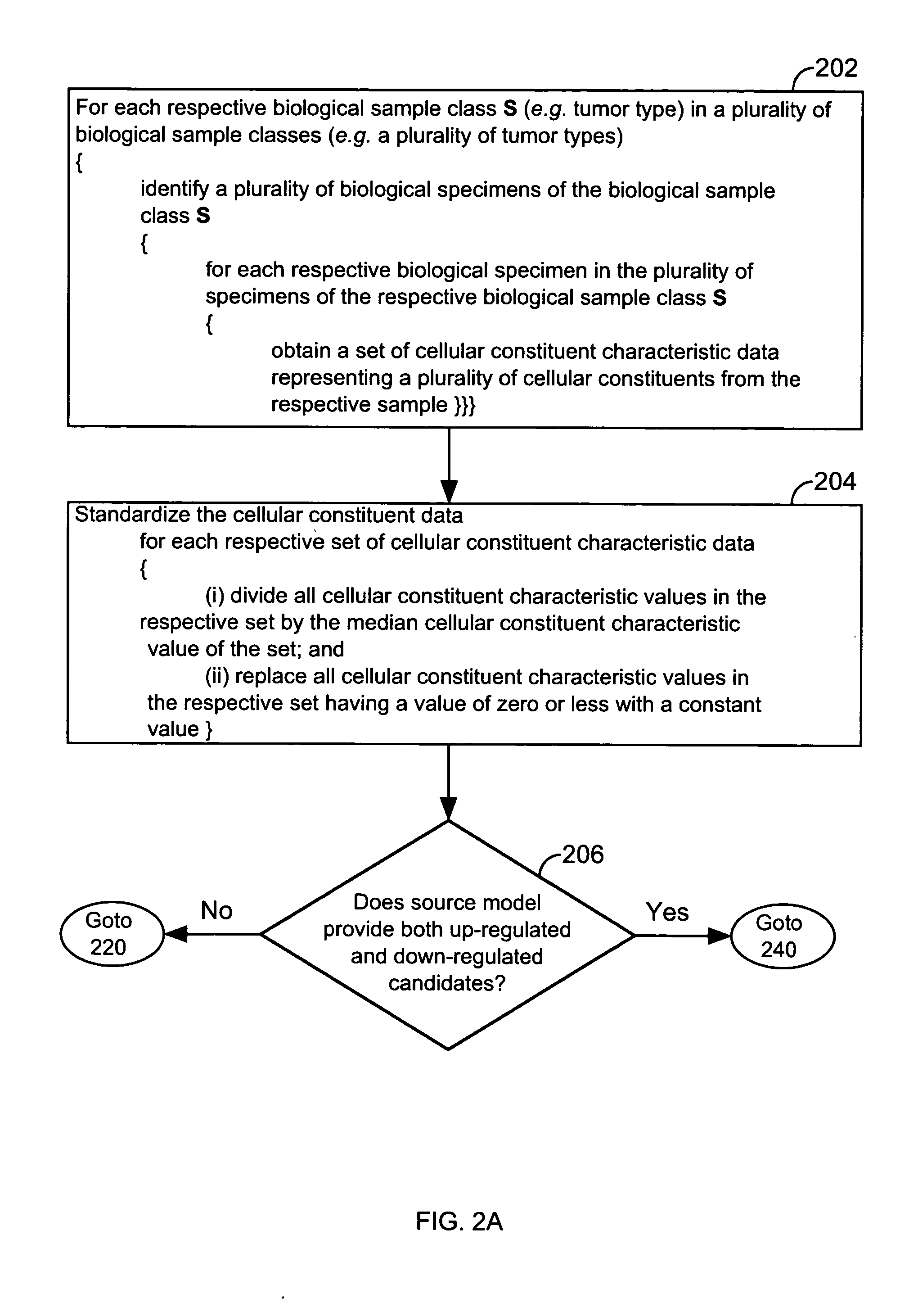Systems and methods for analyzing gene expression data for clinical diagnostics
a gene expression and clinical diagnostic technology, applied in the field of computer systems and methods for classifying biological specimens, can solve the problems of inability to use certain processes, inconvenient use of certain applications, and inability to achieve widespread relevance and applicability of these approaches, and achieve the effect of improving accuracy
- Summary
- Abstract
- Description
- Claims
- Application Information
AI Technical Summary
Benefits of technology
Problems solved by technology
Method used
Image
Examples
Embodiment Construction
FIG. 1 illustrates a system 10 that is operated in accordance with one embodiment of the present invention. FIGS. 2A through 2E illustrate processing steps used to construct a model in accordance with one embodiment of the present invention. Using the processing steps outlined in FIGS. 3A through 3C, such models are capable of classifying a specimen into a biological class. These figures will be referenced in this section in order to disclose the advantages and features of the present invention.
System 10 comprises at least one computer 20 (FIG. 1). Computer 20 comprises standard components including a central processing unit 22, and memory 24 for storing program modules and data structures, user input / output device 26, a network interface 28 for coupling computer 20 to other computers in system 10 or other computers via a communication network (not shown), and one or more busses 33 that interconnect these components. User input / output device 26 comprises one or more user input / outp...
PUM
| Property | Measurement | Unit |
|---|---|---|
| threshold | aaaaa | aaaaa |
| tandem mass spectrometry | aaaaa | aaaaa |
| data structures | aaaaa | aaaaa |
Abstract
Description
Claims
Application Information
 Login to View More
Login to View More - R&D
- Intellectual Property
- Life Sciences
- Materials
- Tech Scout
- Unparalleled Data Quality
- Higher Quality Content
- 60% Fewer Hallucinations
Browse by: Latest US Patents, China's latest patents, Technical Efficacy Thesaurus, Application Domain, Technology Topic, Popular Technical Reports.
© 2025 PatSnap. All rights reserved.Legal|Privacy policy|Modern Slavery Act Transparency Statement|Sitemap|About US| Contact US: help@patsnap.com



